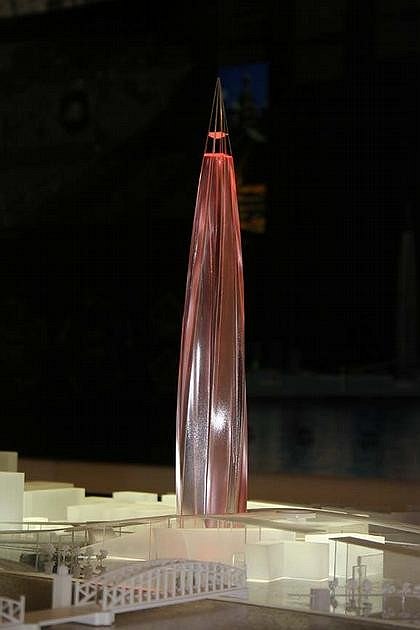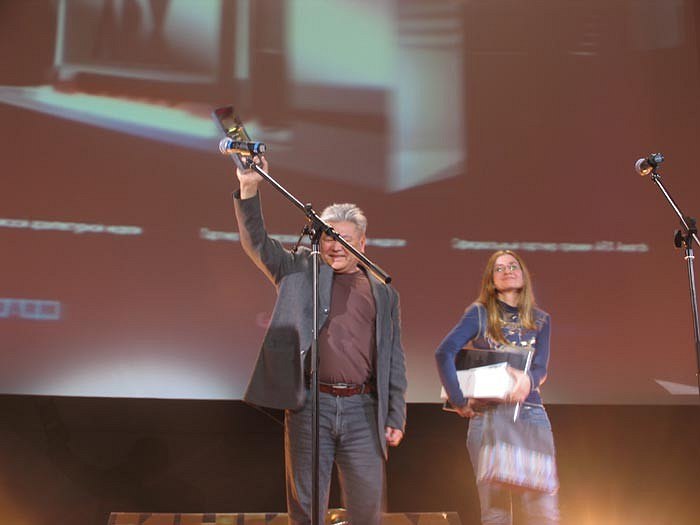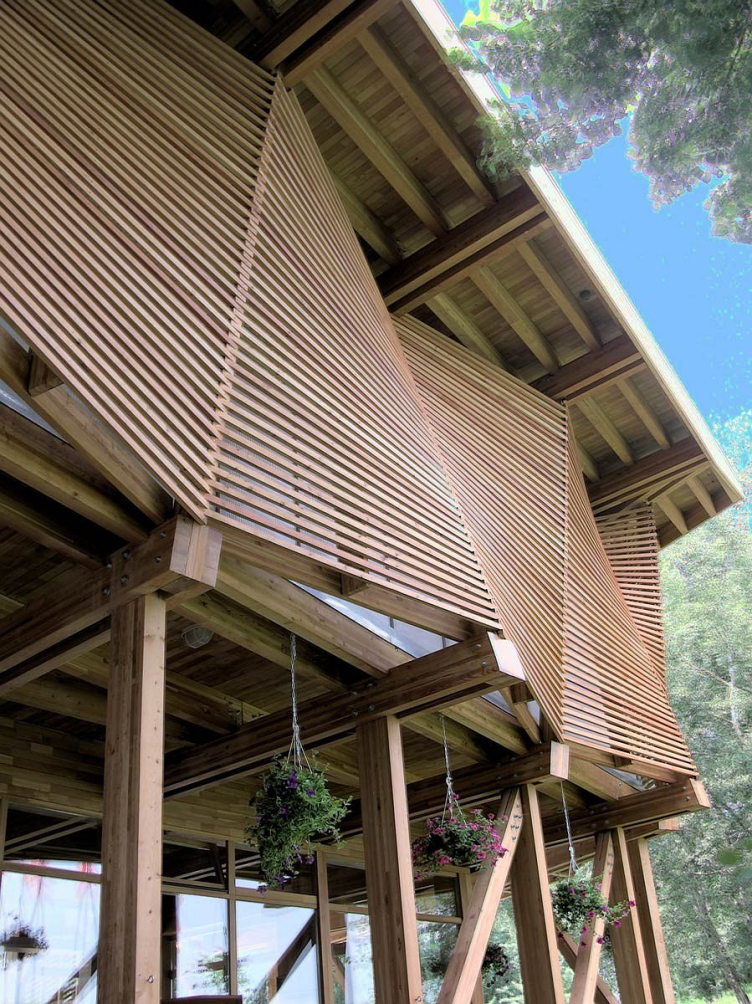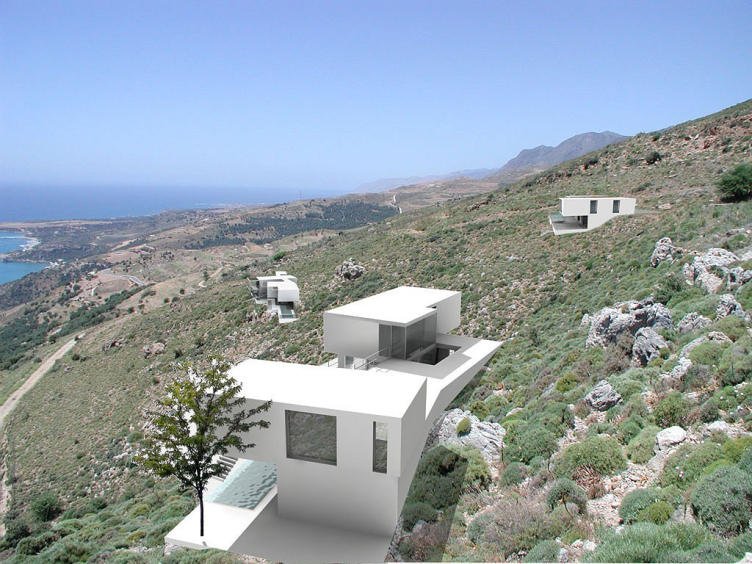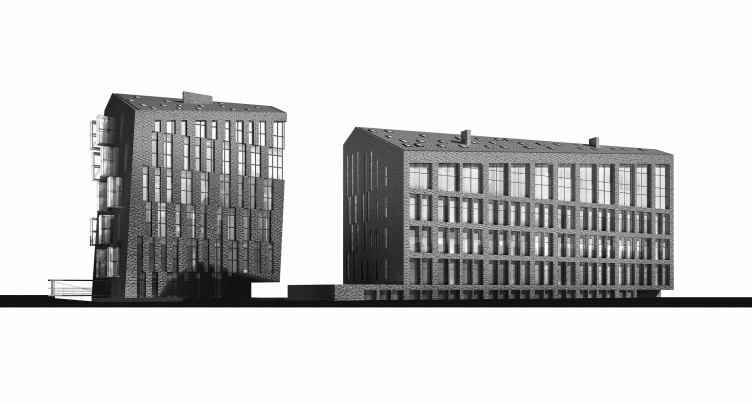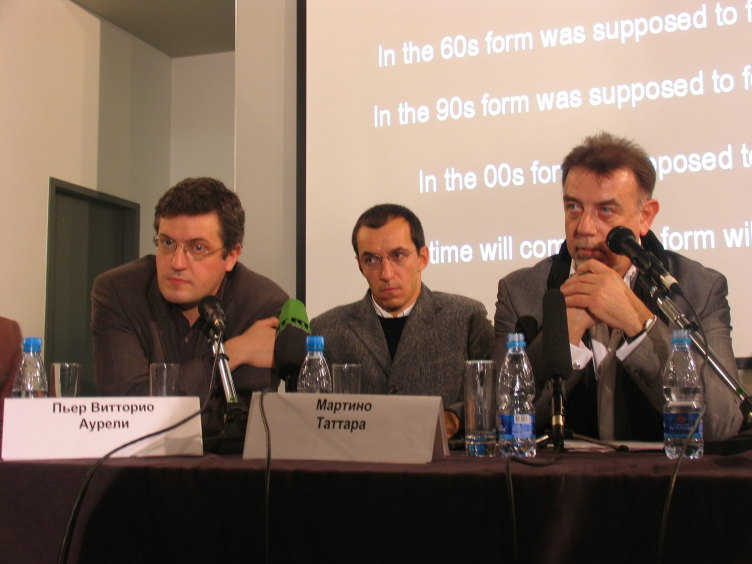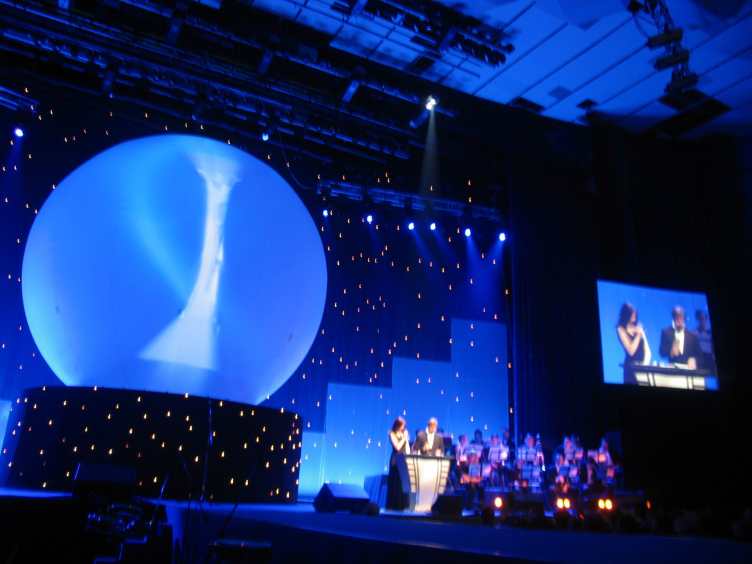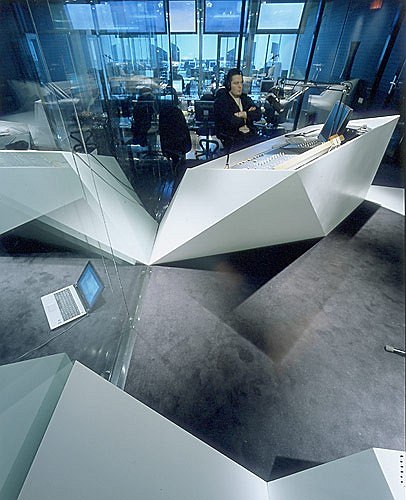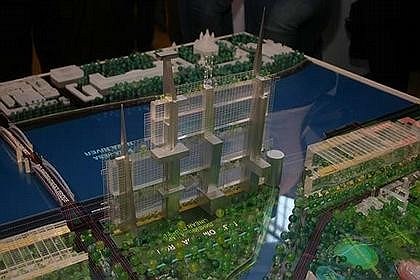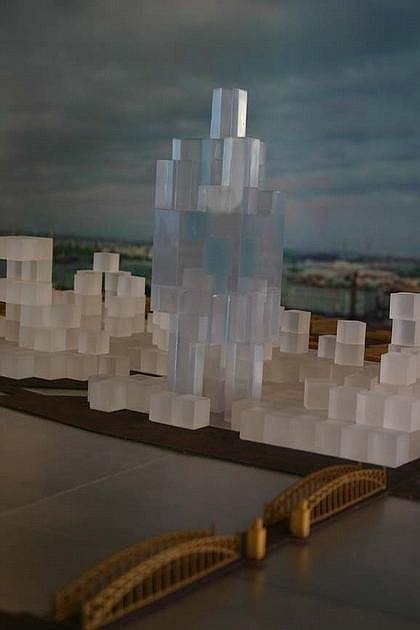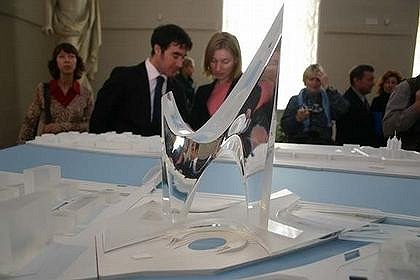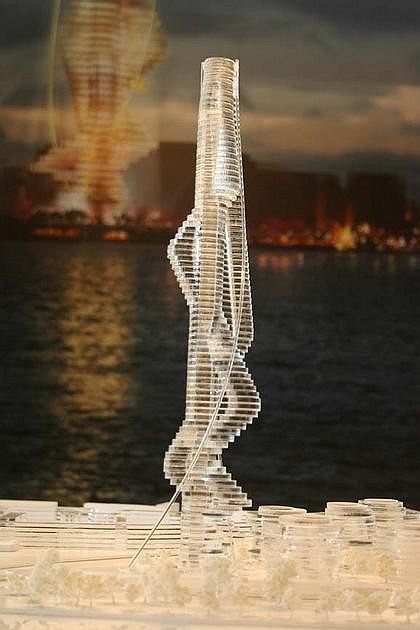The rewarding of winners of premium ARX awards, referred to without superfluous modesty « key event in the field of architecture and constructions » has passed in great pomposity. From such reckless frankness in business of self-eulogy all a little bit shivered, but obediently waited for great event. Also it is necessary to recognize, as a whole the premium has gone right. First, in nominees of the premium it was possible to call many recognized architects who get together in few places now, except for Arx-Moscow. Given up the place somewhere young, and somewhere - to not Moscow colleagues, venerable architects last years have ceased to be appreciable, as though having sated with glory. It is not absolutely correct, because as a result that they do, becomes not so noticeably, as earlier. Perhaps, successful start of premium ARX awards will help to overcome this injustice.
Secondly, the decision of jury in the pleasant image has smoothed PR aplomb of action, having stopped on very quiet things: at once two nominations has won one wooden Yachts-clubs Totan Kuzembaev, having made obvious analogy and some kind of continuation to consecutive victories of “small forms” Brodsky on Arx-Moscow. Same building of Kuzembaev was chosen by two of three foreigners participated in jury, this concurrence clearly having expressed that exactly this, conditionally speaking, «kliazminskoe» the direction in modern Russian architecture for them is more interesting than the rest: no one can argue, it is really special creative product, something an average between concept and architecture. Winners of other nominations: the house in Tessinskij pereulok by S.Skuratov, Crete settlement by D. Aleksandrov, the town-planning concept of Ufa peninsula Raum architects - differ by thoughtful context on the verge of ecology, somewhere natural, somewhere cultural.
If in ARX awards the international jury chose works of the recognized Russian architects, then in some days the rewarding of somewhat mirror took place - on behalf of Russian avant guarde handed over other premium, for the first time this year, the premium of a name of Jacob Chernihova from the same fund. Here not a figurine was handed over, but the solid sum in ? 50 000 (and the general fund twice is more), not venerable, but young and promising, and not Russian, but foreign - is more true international, but from Russians Boris Bernaskoni who has brought the tablet last day has dared to participate only. Awarded not for the concrete work, but for creative credo, finding among 55 nominees the most headed in the future, corresponding not to the letter, but spirit of avant guarde. As those have recognized the urbanists-theorists working, in particular, for administration of the European Union and for the Albanian capital, architects of group DOGMA. Architects represent obvious alternative to modern searches of new in the refined complex bends counted on a computer - they despise style refined, think in scale of cities, buildings for simplicity represent in the form of cubes, speak by manifests - looking directly before themselves, drop the perfected phrases, probably, fragments of dogma. Anyway their loss from the formalized searches of the present is obvious; and avaricious images of their tablets even more then avant guarde, also remind most of all Leda - from here, probably, the name « city of new Jacobins». On the other hand, such theorized urbanism well corresponds to slogans of the present Venetian Biennial, devoted to problems of cities on which DOGMA represented the project of the ideal city of Vema in the Italian pavilion; they have not been noticed on Biennial, probably, just because of utopianism.
Not Utopias, but real business was awarded on Biennial. The Danes successfully cooperating with Chinese in sphere of ecology. Capital of Colombia Bogota which like Munhauzen with success has pulled out itself from problems with own hand, have named « a beacon of hope » for all other cities. Not so much beautiful exhibition design was estimated, but the maintenance - the present exhibition of achievements. As in Russia urbanistic successes now are not present, and there is only a fact of uncontrollable growth of one big city so there was nothing to count for. The graceful decision - to show the Russian urbanism in the form of memoirs on its consequences presented in poetical installations of Brodsky, it was pleasant for those who understands, and for the rest, most likely, it was not clear - this time on Biennial estimated not the language of arts, but figures. Though one beautiful exposition have awarded, Japanese.
Besides two absolutely new and loud premiums, in Moscow have handed over already become for four years habitual «Arhip» from magazine Salon, the premium for interiors and private houses. This year traditionally qualitative works of winners had an easy strike of nervousness - asymmetric windows, shifts - whether a style, whether the general mood of private architecture. The winner of the main nomination « the Individual house » architect Dmitry Gejchenko could not come on rewarding - in the summer he had been arrested at the Ukrainian customs for a harmless pack of medicines, not so long ago have released under a subscription not to leave and in the middle of December he was going to be judged.
The turn of very different premiums not connected with trade unions has recovered an architectural life in general and November in particular, but the main sensation has concentrated not here. During the whole November everyone who could, discussed projects of a skyscraper "Gazprom-city", exposed in Academies of arts in Petersburg. The press was flooded with clauses against a skyscraper, it is impossible to spoil the unique in the country beautiful city, strictly speaking. Have called some press conferences, there were youth associations, protest actions. In the answer have received assurances that projects - only sketches and nothing is decided jet.
Movement in protest is very active, though is non-uniform. Its the first, the most nice, the part, conditionally speaking, intellectual, is presented by Michael Piotrovsky and the truth inherits D.S.Lihacheva's ideas, already defended Peter from one skyscraper, that was growth below and not gazprom’s, it was not planed as a symbol of the statement above city of a very large and influential company and in this respect positions of a skyscraper of the ninetieth were rather weaker. Closer by the end of the month this movement, at last, has found support of foreign colleagues in the form of the letter of lord Norvicha and Kolin Ameri, Englishmen, representatives of the World fund of protection of monuments; clause in Times has followed.
The second part of resistance - trade-union, and though they act for one business, the performance of the unions of architects does not leave the insult that the Russian architects were have not involved in designing.
The opinions concerning the projects of foreign stars also dispatch – the director of the Museum of architecture David Sakrisjan has named all of them bad and slipshod, but has not explained why. Piotrovsky opposite, has recognized projects to be good, having divided the quality of architecture and that damage which it will put to city if will appear in that place where it is planned. Somewhere here exists the output - why not to construct a good skyscraper « from a star » somewhere in the suburb of the city, at the same time having recycled the area? If, certainly Gazprom is ready to go on the compromise.
If to look at projects generally it would be desirable to agree with Piotrovsky. Remaining within the limits of not most refined genre, "star" have offered various enough decisions. One law is observed: from six invited, five were unconditional stars of the first size, and the sixth project was also foreign, but « with greater Russian participation » - RMJM. It is also a workshop of not the last size, but not with such world glory, as the others - the seventh among the British architectural companies. It participated in construction of the Scottish parliament known for very delicate attitude to historical building, but not on the first roles. But it works for Dubai, it is not a secret, that for the Russian officials and businessmen this place is almost an ideal of happiness.
If to look at projects the small difference is felt at once. Five "stars", everyone in own way, have tried to brighten up the intrusion of the giant into city. Nuvel has built "Aurora", it is not the first building in the form of the ship designed by him ; Libeskind - an arch of the General Staff, having tried to open a view on Smolnyi Cathedral by Rastrelli; Fuksas - a spike, whether Admiralties, whether Petropavlovka. Koolhas «cut away» the volume by cubic niches, having tried to retire the massiveness of a building, the tower by Hertzoga and De Meron is bent as if it is ashamed for it to stand on this place. In vain spoke, that our scandal has not reached the foreigners, either all of them knew, or felt - all five present "stars" have anyhow expressed their confusion to what they do, interfering in « a heavenly line ».
Only one project has appeared to be alien doubts and meditations. It represents a pure embodiment of an emblem of Gazprom, a gas candle, the size even higher the one was announced for 20 meters. It is very expensive, technologically complex sculpture of a torch - the cleanest embodiment of the order for an arrogant symbol of gas. Whether it was necessary to doubt, what project would be choosen. What about the public, declaring the results, Valentine Matvienko has told, that petersburgers should be happy, and Alexey Miller has suggested the public to be consoled whith a skating rink which at the same time will be constructed in the territory of Okhta. It was on the 1st of December.
The autumn crop of awards is collected. Serious events in professional sphere in December are not expected, but development of scandal with a Petersburg tower is probable.


